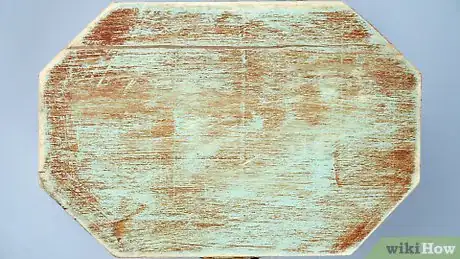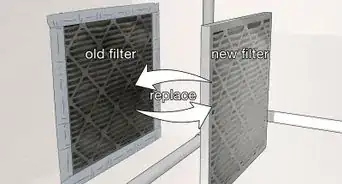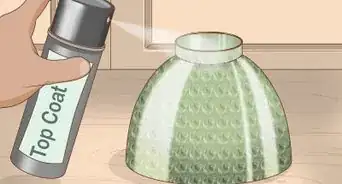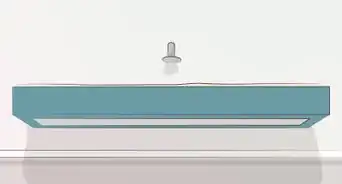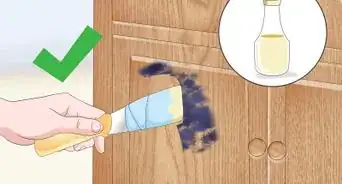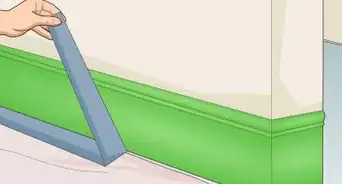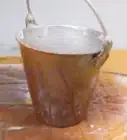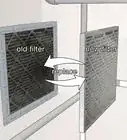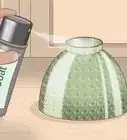This article was co-authored by Tanglewood Sue and by wikiHow staff writer, Eric McClure. Tanglewood Sue is a DIY and Upcycling Specialist and the Owner of Tanglewood Works out of Hyattsville, Maryland. With over nine years of experience, Sue specializes in upcycled painted furniture and other handmade, personalized, and sustainable goods. With her passion for art and reinvention, marketing experience, and Bachelor’s Degree in Broadcast Media, Sue has been able to create a business that not only provides quality pieces but empowers customers to create their works through her library of DIY tutorials and live demos as well as DIY supplies.
There are 16 references cited in this article, which can be found at the bottom of the page.
This article has been viewed 12,731 times.
Whether you’re getting into candle making or you’re refurbishing some furniture with chalk paint, you may be wondering if you can actually paint wax. The good news is that you can, so long as you prep the wax for painting. Wax isn’t porous, which makes it hard for the paint to stick to it without some kind of assistance. Luckily, there are a few easy hacks here that you can use to give your candles, wax melts, or furniture a fresh splash of color!
Steps
References
- ↑ https://youtu.be/gh9m8yDLV0Y?t=634
- ↑ https://youtu.be/gh9m8yDLV0Y?t=24
- ↑ https://youtu.be/gh9m8yDLV0Y?t=39
- ↑ https://youtu.be/gh9m8yDLV0Y?t=572
- ↑ https://youtu.be/gh9m8yDLV0Y?t=640
- ↑ https://generalfinishes.com/faq/how-do-i-remove-wax-existing-finish
- ↑ https://generalfinishes.com/faq/how-do-i-remove-wax-existing-finish
- ↑ https://www.lostandfounddecor.com/how-to-paint-over-chalk-paint/
- ↑ https://wigglywisdom.com/can-candles-be-painted/
- ↑ https://youtu.be/W5KsgfOg6W8?t=121
- ↑ https://craftknights.com/how-to-paint-wax-the-easiest-and-best-possible-method/
- ↑ https://wigglywisdom.com/can-candles-be-painted/
- ↑ https://acrylicartworld.com/are-acrylic-paints-flammable/
- ↑ https://youtu.be/W5KsgfOg6W8?t=121
- ↑ https://youtu.be/OvF1o4ca_Ck?t=390
- ↑ https://youtu.be/OvF1o4ca_Ck?t=345
- ↑ https://youtu.be/QUcUfrF2u2M?t=87
- ↑ https://www.tocanvas.net/is-paint-flammable/
- ↑ https://www.popularmechanics.com/home/outdoor-projects/a8912/spray-painting-tips/
